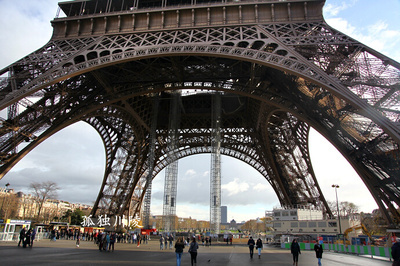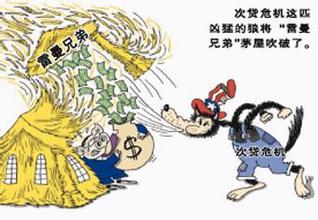The State of Stencil Technology钢网技术王国In surface mount assembly, the stencil is the gateway to accurate, repeatable solder paste deposition. 表面贴装,钢网是锡膏准确重复印刷的关键。By Mark Whitmore As solder paste is printed through the stencil apertures, it forms deposits that hold the components in place and, when reflowed, secures them to the substrate. The stencil design — its composition and thickness, the size and shape of its apertures — ultimately determines the size, shape and positioning of the deposits, which are critical to ensuring a high-yield process with minimal defects. 由于锡膏通过钢网进行印刷。印刷的锡膏将部品固定,回流时,将部品固定于基板。钢网设计———钢网的结构,厚度,尺寸大小和孔型———最终决定印刷锡膏的尺寸大小,外形和位置。它是确保高产量,降低缺陷率的保证Today, a wide variety of materials and fabrication techniques enable suppliers to design stencils that meet the assembly challenges of fine-pitch technology, miniaturized components and densely packed boards. 今天,多种多样的材料和制造技术时供应商能设计出的钢网能迎接细微坡度,小型化部品和高密度封装电路板的挑战。In addition, stencil technology now serves a full range of mass imaging materials. As stencil designers have gained in-depth knowledge about how aperture size and shape affects deposition, new technologies extend the capabilities of printing platforms and stencils into applications as varied as adhesive deposition and wafer bumping. 另外,钢网技术现在成为广泛的成像材料。钢网设计人员已经获得丰富的知识,他们知道多大的孔,怎样的外形影响沉积物,The stencil serves two primary functions. The first is to ensure precise placement of a material, such as solder paste, flux or encapsulant, on a substrate. The second is to ensure the formation of properly sized and shaped deposits. 钢网有两个基本作用,一个作用是确保焊锡,松香或胶水等物料正确放置到基板上,另一个作用是确保沉积物的尺寸和外形。Stencil Materials and Manufacture 钢网原料和钢网制作
The most widely used stencil materials are metals, primarily stainless steel and nickel. In recent years, various plastics also have gained acceptance. Stencil manufacturing techniques include chemical etching, laser cutting and electroforming. A brief review of these materials and techniques indicates that manufacturers can select from a wide variety of stencil types to meet specific application needs.
钢网最常用的材料是金属,主要是不锈钢和镍。近些年,已经采用各种各样的塑料。钢网制作技术包括化学腐蚀,激光切割和电铸。粗略回顾一下这些物料和技术,可以看出,制造商可以选择多种多样的钢网类型来满足特殊的应用要求。Historically, the most commonly used, lowest cost stencil fabrication method has been chemical etching. This is a subtractive process that uses photolithographic techniques to define the aperture pattern, and then applies an etchant to form the apertures simultaneously from both sides of the stencil. To achieve apertures with trapezoidal walls, which improve solder paste release, the artwork can be designed to create slightly larger apertures on the side of the stencil that faces the substrate. 过去,普遍采用的低成本的钢网制作方法是化学腐蚀。这是一个反工艺,它应用成像技术来决定孔型。然后,同时从钢网的两边腐蚀成孔。未了得到梯形墙(利于释放锡膏),钢网面向基板的一侧设计的孔稍大一些。Double-sided etching can create knife-edge aperture profiles, as well as "under-etch" and "over-etch" conditions. It is possible to "electropolish" foils after they have been etched to remove knife edges and "smooth" the aperture walls. Chemical etching is suitable for large aperture/coarse pitch applications but cannot satisfy the requirements of sub-0.5 mm pitch applications. 双侧腐蚀可导致孔型出现刀边,也会造成“未完全腐蚀”“过腐蚀”,钢网腐蚀后,可以“电抛光”除去刀边和使孔道平滑。化学腐蚀适合于大孔/粗孔,但不能满足0.5mm以下的孔径要求。In response to decreasing pitches and increasing component densities, laser cutting has become a more widely used stencil fabrication process. Laser-cut stencils are produced directly from Gerber data or other data formats, reducing the number of photolithographic steps and subsequently reducing the chance of image misregistration significantly. Computer numerically controlled (CNC) laser cutting, driven directly by Gerber data, produces highly accurate, repeatable stencil apertures. The precision of the technique means that aperture dimensional tolerances of ±5 µm can be produced, even over large print areas. 为了减少斜度,增加组件密度,激光切割已经广泛应用于钢网制作工艺。激光切割钢网直接由Gerber数据或其他数据模型做成。减少了成像的步骤,继而减少了影像登记出错的机会。计算数控(CNC)激光切割直接由Gerber数据传动,形成高精度,重复的孔。该技术的准确度为孔径允许误差为±5 µm,即使大的印刷面积,孔径允许误差也是±5 µmClick here to enlarge imageFigure 1. Laser-cut aperture showing characteristic striation markings.
激光切割的孔出现特性的条形刻痕By adjusting the intensity of the laser during manufacturing, high-contrast fiducials can be created on the stencil surface with no need for in-filling. This feature also aids the accuracy of the manufacturing process. The intrinsic properties of the process result in apertures with a trapezoidal cross-section, which enhance paste release. A possible concern is the characteristic "striated" finish of aperture walls left by a laser (Figure 1). The latest laser cutting technologies have helped reduce this, but when a specific application demands a smooth surface wall, it is possible to electropolish or even electroplate laser-cut stencil apertures following the cutting procedure. 在制造过程中,通过调整激光的强度,钢网表面,无需内填充,就能形成基准鲜明的对比。这些特性有助于制造工艺的准确性。工艺的内在特性,导致孔内形成梯形断面,这有助于锡膏释放。人们可能关注激光切割在孔上留下特性条纹。最近的激光技术已经可以减少条纹的产生。但是,当特定的应用需要光滑的孔面,激光切割孔在切割之后可能进行电抛光或电镀。In contrast to chemical etching and laser cutting, electroforming is an additive process. Electroformed stencils are "grown" by electro-depositing a plating material, usually nickel, onto a mandrel carrying a negative, photo-resist image of the aperture pattern. The process produces extremely precise, smooth-walled apertures with a natural taper that require no additional finishing processes. The extreme precision of the process targets electroformed stencils for use in ultra-fine pitch applications. 和化学腐蚀及激光切割相比,电铸是一个附加工艺,电铸钢网是用电镀材料,通常为镍,在带负电孔型成像的卷筒,该工艺能形成精确光滑表面的孔,自然锥度另需精加工。工艺高精度旨在生产高精度应用要求的电铸钢网。Figure 2. The range of adhesive dots that can be produced from a single-thickness plastic stencil. 粘合点可由单层塑胶钢网印刷而成。While standard SMT stencils can be manufactured using polymer foils, plastic as a stencil material has gained real acceptance in adhesive printing over the past five years. The primary benefit of using plastic is that it is possible to create stencils up to at least 8 mm in thickness. 标准SMT钢网可由聚合材料制作而成。塑胶已经作为钢网材料,应用于粘合剂印刷有五年。使用塑胶的主要好处是:制作的钢网的厚度达8mm以上。Click here to enlarge imageFigure 3. Bottom side of a plastic stencil, showing undercut features to sit over board components.
塑胶底侧,有砍口,可以盖在电路板元件上。Such stencils are manufactured using standard CNC machining techniques. By drilling apertures of different sizes in the plastic, adhesive deposits of varying heights can be printed from a single thickness stencil with a single print stroke (Figure 2). The extreme thickness also allows the stencil underside to be undercut and routed so that it can accommodate previously placed components and clinched leads (Figure 3). 这些钢网由标准的CNC计算机数控技术制作。通过在塑胶上钻不同尺寸的孔。由单层钢网在刮刀刮动一次可印刷成不同高度的粘合剂沉积物。一定厚度的钢网底侧可以挖空,以便能容纳事先放好的元件和焊接好的铅料。Design Rules and Capabilities 设计规则和设计能力The size and shape of stencil apertures determine the volume, uniformity and definition of the material deposited onto substrates. Rigorous control of aperture quality therefore is critical to successful stencil design, particularly for fine and ultra-fine pitch applications where small amounts of material must be deposited with great precision. Measures such as area ratio (the area under the aperture opening pided by the surface area of the aperture wall) and aspect ratio (aperture width pided by stencil thickness) can be used to determine appropriate aperture sizes. 钢网孔的尺寸和外形决定基板上沉积材料的体积,均匀性和精确度。因此,严格控制孔的质量是钢网成功设计的关键。特别是小量沉积材料要求精度高时的高精度要求。面积比率(开孔面积与孔壁表面积的比值)和表观比率(孔的宽度与钢网的厚度比值)的测量可用于确定孔的大致尺寸。The general rule is that, for acceptable paste release, the area ratio should be greater than 0.66 and the aspect ratio greater than 1.5. When designing apertures that adhere to these rules, it is necessary to consider each stencil manufacturing technique on its own merits. For example, it is challenging for the chemical etching process to drop below a 1.5 aspect ratio while, with laser cutting and electroforming, apertures can be produced that have a 1:1 aspect ratio to the stencil thickness. 常用的规则是:对于锡膏释放来说,面积比率应大于0.66,表观比率应答于1.5。设计孔遵循这些规则,有必要考虑每一种制作工艺的优点。比如,表观比率低于1.5对于化学腐蚀试一大挑战,而激光切割和电铸可制成表观比率为1.1的钢网。Of greater value to the stencil designer is the area ratio, which can be related directly to eventual solder paste release. During the printing process, when the stencil separates from the substrate, competing surface tension forces dictate whether the solder paste will transfer to the pad it has been printed on or remain adhered to the stencil aperture walls.
对于钢网设计者来说非常重要的是面积比率。它直接与锡膏释放有关。在印刷过程中,当钢网跟基板分离时,表面张力表明锡膏是否转移到印刷在基板上的焊盘还是继续粘在钢网的孔壁上。When the pad area is greater than 66 percent of the aperture wall surface area, the probability of achieving efficient paste transfer is increased. As the ratio decreases below 66 percent, paste transfer efficiency decreases and print quality becomes erratic. The finish of the aperture walls can have an impact at these levels. Laser-cut apertures that have been electropolished and/or electroplated during manufacture promote improved paste transfer efficiency. Similarly, the smooth aperture walls produced by electroforming also enhance paste release. 当焊盘面积大于孔壁表面积的66%。提高锡膏有效转移的可能性。比率低于66%,锡膏转移的效率降低,印刷质量变差。这种水平对完成的孔壁有影响。制造过程电抛光和电镀处理的激光刻录的孔壁,改善了锡膏转移的效果。同理,电铸产生的光滑孔壁也有助于锡膏释放。Component pitches and aperture density also can dictate the appropriate manufacturing technology to select. For applications with pitches below 0.5 mm, choices are limited to laser cutting or electroforming. Both techniques are capable of producing high-quality, accurate fine-pitch stencils, though each has its own advantages and disadvantages. 组件斜度和孔密度也表明要选择适当的制造技术。对于斜度低于0.5mm的用途,只能选择激光刻录或电铸。两种技术能制成高质量,精确布孔的钢网。两种技术有各自的优缺点。The laser process does not require artwork, reducing misregistration issues. Foil thicknesses of 50 to 500 µm can be cut, although stock foil thicknesses are limited. Conversely, the thickness of electroformed foils can be controlled in 2.5-µm increments, anywhere between a total thickness of 25 and 300 µm. Electroformed apertures reproduce the mandrel photo resist finish faithfully and do not require any further processing. However, laser-cut apertures might require further treatments to smooth aperture walls for ultra-fine-pitch applications. 激光刻录不需要工艺图纸,减少登记出错。可以切割成50-500µm,尽管主膜厚度受限。相反地,电铸钢网的厚度在2.5µm增量,总厚度为25-300µm。电铸复制卷筒照片孔型图,不需要进一步的加工。然而,激光切割可能需要进一步处理,抛光孔壁以满足高精度要求的应用。Finally, laser cutting is a serial process, so time-to-manufacture increases as aperture count does, impacting the stencil's final cost. The features in an electroformed stencil are formed in one process so aperture count does not affect costs so dramatically. This makes electroforming the preferred technique for high-density applications such as wafer bumping, where aperture counts are now more than 2 million. 最后,激光切割是一系列过程,孔数增加,制作的时间增加,影响钢网最终成本。电铸钢网的特性是一次形成的,因孔数对成本的影响不是那么大。这使电铸成为高密度应用,比如晶片封装优选技术。Expanding Capabilities 扩展容量The ability to fabricate stencils with stepped apertures in the top surface and pockets routed out of the bottom surface has expanded the capabilities of the basic stencil printing process. Depending on the nature of the material — its viscosity and flow characteristics — different sizes and shapes of apertures can be created to produce different volumes of deposits. 顶层,底层开孔钢网制作的能力已经扩展了基本钢网印刷的工艺。取决于原料的特性——粘性和流动性——不同的孔型和不同大小的孔可形成不同的沉积物A second advance that contributes to this expansion is the enclosed print head, which allows a wide variety of materials to be delivered through the stencil to the substrate. When the material is fully contained within the printing system, concerns about handling, drying out, moisture absorption or waste are eliminated. 扩展的第二个进步是附着印刷头,它允许大量的物料通过钢网到达基板上。当物料完全包括在锡膏印刷系统,关注处置,干燥,吸潮和减少浪费。These two advances allow the stencil printing process to be inserted into the assembly process wherever required, before or after placement of different types of components. As a result, virtually any material required in electronics assembly now can be deposited through a properly designed stencil onto bare or partially populated substrates, at a pace significantly higher than even the most advanced dispensing equipment. Since any number of apertures can be filled in a single traverse of the print head over the stencil, even the highest I/O counts will not create bottlenecks on a high-speed, high-volume assembly line. 这两大进步允许钢网印刷工艺可放入流水线,必要时,元件放置前后。结果,需要组装的元件可以通过钢网贴装到组装板上。其速度明显快于先进的分配机。一定数量的孔可以通过在钢网上简单横过印刷头,即使最高的I/O数也不会使高速高容量生产线产生瓶颈The process also is inherently flexible, since the basic equipment platform remains the same. With a change of stencil and perhaps an adaptation to the enclosed print head, a stencil printer may be used as needed to deposit solder paste, adhesive, flux, encapsulants or thermal interface materials. 工艺工程有内在的弹性,因为基本设备平台保持一样。钢网改变和调整至闭合印刷头,钢网印刷机用作锡膏印刷,红胶水印刷,松香,密封剂或其他的热表面材料。Wafer Bumping 晶片凸起In this process, a standard stencil printing technique is used to print solder paste directly onto silicon wafers (Figure 4). To achieve the required bump heights, the solder paste is over-printed onto the wafer bond pads. During subsequent reflow the solder pulls back onto the wettable pad surface to form a solid solder bump structure. 在这个过程,标准印刷技术用来把锡膏直接印刷到硅晶片上。为了获得要求的凸起高度,锡膏在晶片焊盘过焊。在下一个回流工序,锡膏浸润焊盘表面,形成一个固态锡膏凸起。Click here to enlarge image
Figure 4. Solder paste deposits, printed directly onto a wafer using 110-µm square apertures on a 150-µm pitch. During subsequent reflow, the solder will pull back onto the wafer bond pads to form inpidual solder bumps.
图4,锡膏沉积物,用110平方微米的孔150微米的斜度印刷在晶片上印刷,在下一个回流工序锡膏焊盘表面,形成一个单个锡膏凸起。Executing the process with the ultra-fine features involved requires extreme control. Correct stencil design is key. However, it is no trivial task to create well-designed stencil apertures that achieve defect-free results with a tight distribution of tall reflowed bumps, especially for full array pad arrangements with pitches of less than 250 µm. 最佳特性的执行过程需要严格控制。正确的钢网的设计师关键。然而,设计很好的孔并不是高回流峰严格分区情况下不产生缺陷的关键。特别是250µm斜度的整排焊盘。For a wafer bumping stencil, the cutting technology must be capable of producing thousands of small, closely spaced apertures to extremely tight dimensional and positional tolerances. Small excursions from the optimally designed aperture size can lead to large bump height variations, which may, in extreme cases, produce open circuits in the assembled chips. 对于晶片凸起钢网,切割技术应能够生产尺寸和位置要求极其严的好几千小而密的孔。跟最佳设计的孔细微的偏差可以导致大的凸起高度变化,它所产生的严重后果是组装件出现“开路”。Click here to enlarge imageFigure 5. Transfer efficiency of a solder paste related to aperture area ratio and its effect on reflowed bump co-planarity.
图5,锡高转移的效率与孔面积比率及它对回流峰共面度的影响。It also is critical to maintain the accuracy of the aperture position as close to the computer-generated design as possible. Since the entire pad on the wafers must be overprinted to achieve an acceptable reflowed bump size, when overprinting is done on tight pad pitches, the apertures must be positioned with enough space between them so that bridging defects do not occur. As a rule of thumb, aperture webs should be no less than the stencil thickness to curtail bridging defects. 保持孔位精度跟计算机设计值尽可能接近是关键。因为晶片整个焊盘应过量印刷锡膏以达到课接受的回流峰尺寸。当焊盘锡膏在焊盘斜度过渡印刷时,孔间应有足够的空间,这样才不会产生连锡。首要规则:为了减少连锡孔网应不少于钢网厚度。Sometimes aperture openings need to be offset so they are not centered directly over pads. Depending on the density of the apertures in a particular region of the stencil, it may be necessary to print on only a portion of the pad. Considering that the pad size on a wafer can be less than 100 µm, the stencil cutting technology must be able to position the aperture openings precisely, with offsets of only a few microns one way or the other (Figure 6). 有时孔口应偏移,因此,他们不直接正对焊盘中央。在钢网的特定区域,根据孔的密度,有必要只印刷焊盘的一部分。考虑到晶片上焊盘的尺寸可能少于100 µm,钢网切割技术应能精确定位孔的开度,一个方向或另一方向仅出现几微米的偏差。Figure 6. The latest wafer bumping stencils for 300 mm can contain more than 2 million apertures. 最新的300 mm钢网凸起可以包括2,000,000个孔When designing the stencil aperture itself, common practice is to work backwards from the bump specification. From this information the volume of solder paste required can be calculated, which can in turn be used to design the aperture dimensions. In an ideal situation, the largest aperture in the thinnest stencil with the maximum space between apertures provides the optimum process. 设计钢网孔本身时,一般的做法是凸起要求往后作业。由锡膏的用量(锡膏的用量可以计算出),可反过来用来设计孔的尺寸。实际情况,最薄的钢网,最大的孔,最大的空间距,提供最优的工艺。Based on extensive research, paste transfer efficiency curves have been generated to assist the stencil designer. Figure 5 shows the transfer efficiency of a solder paste with respect to aperture area ratio and the resultant effect on reflowed bump co-planarity. From this it becomes clear that apertures must be designed with an area ratio in excess of 0.6 for a repeatable process. 大量研究生成的锡膏转移效率曲线有助于钢网设计。图5,锡高转移的效率与孔面积比率及它对回流峰共面度的影响。从这清楚看出,工艺可以接受的孔设计的面积比率应超过0.6,Click here to enlarge imageFigure 7. Closeup of the stencil shown in Figure 6, with 110-µm square apertures on a 150-µm pitch.
图6所示钢网的放大,150-µm斜度,110-µm2的孔Designing a wafer bumping stencil is a highly skilled task. A number of parameters interact, such as stencil thickness, aperture size, shape and other factors, including image orientation and positioning, which impact the process. As the industry moves towards 300 mm wafers, with pitches pushed down towards 120 µm, the process is about to challenge stencil technology even further (Figures 6 and 7). 晶片凸起钢网设计是技术要求高的工作。一系列的参数,如钢网的厚度,孔的尺寸,孔的外形和其他因素,包括图像方向和图像定位,他们影响工艺。电子行业转向300 mm晶片其斜度为120 µm。挑战钢网技术的工艺更进一步。Conclusion Stencil design and manufacturing technologies have evolved to meet the needs of both standard and fine-pitch SMT assembly, and will continue to do so. One challenge is the increasing use of a wider mix of components, requiring both large and small material deposits. Stencil suppliers need to explore ways to overcome current area ratio rules. 结论钢网设计和钢网制作技术发展,满足标准的和精斜度SMT组装件的需要,而且,将不断向前发展。面临的一个挑战是增加组件大量混用,同时要求大量和少量的物质沉积。钢网供应商应寻找新的出路克服当前面积比率规则。However, wafer bumping will pose the greatest challenge to stencil technology. While today's most advanced applications use 150 µm pitches on 300 mm wafers, the 2002 International Technology Roadmap for Semiconductors called for 80 µm pitches by 2007. 然而,晶片凸起给钢网技术带来了巨大的挑战。今天,先进的应用使用300 mm晶片150 µm斜度。2002年国际技术倡导到2007达80 µm。The issues involved in meeting this requirement include manufacturing capability, as well as image alignment accuracy and stability. Current materials may have reached their limits. In order to achieve pitches below 100 µm, forward-looking manufacturers may need to explore new stencil materials and manufacturing techniques. 这个问题涉及要求的满足,包括制造能力,图像对齐精度和稳定性。当前的物质已经达到极限。为了达到斜度少于100 µm,着眼未来的制造商可能开发新的钢网材料和制造技术。Mark Whitmore, future technologies manager, may be contacted at DEK, [email protected] 爱华网
爱华网



